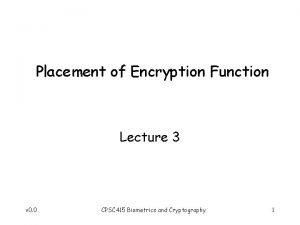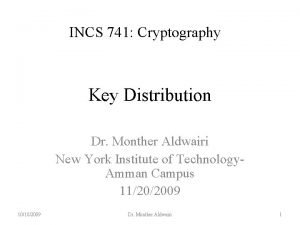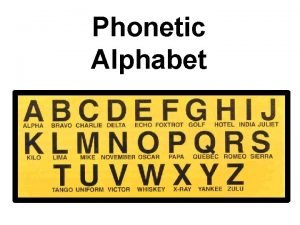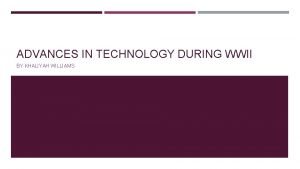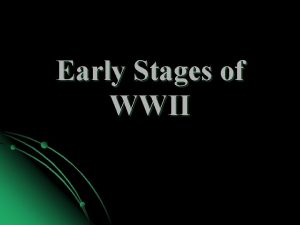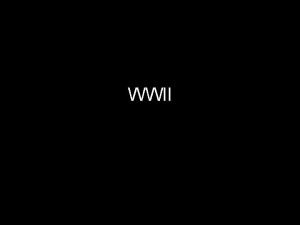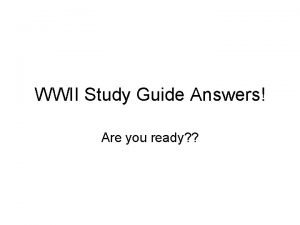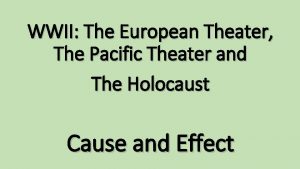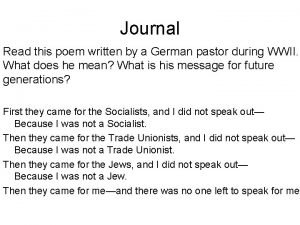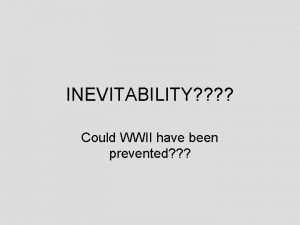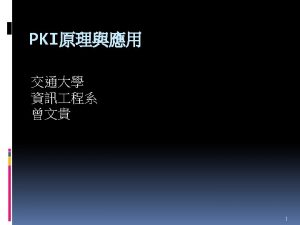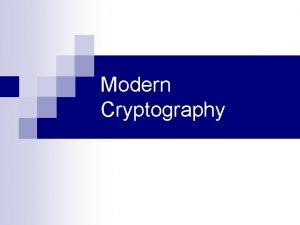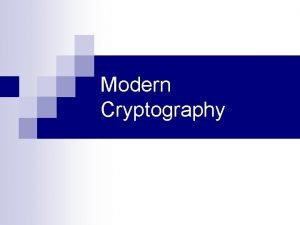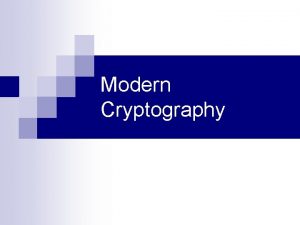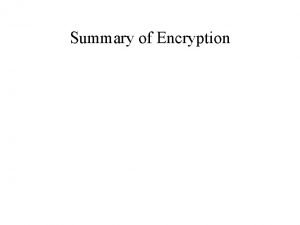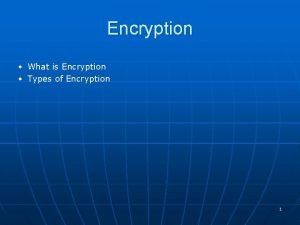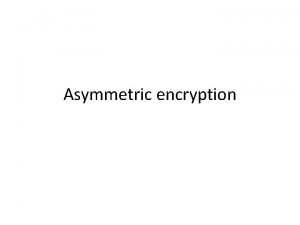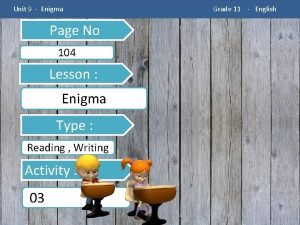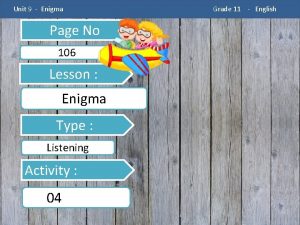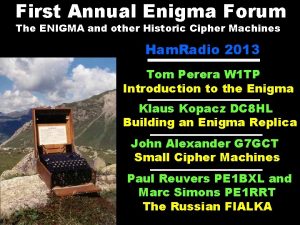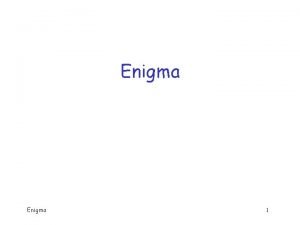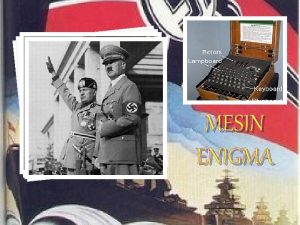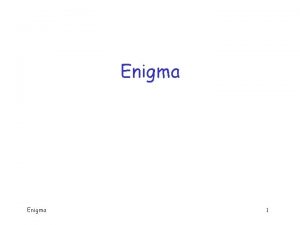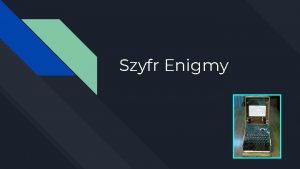CRYPTOGRAPHY Cryptography in WWII German Encryption Method Enigma
















- Slides: 16

CRYPTOGRAPHY

Cryptography in WWII • German Encryption Method : Enigma • American Encryption Method : Navajo • William F Friedman

The Enigma : 1930 -45 • • • Designed for military communications Designed by Professor David Lovelock 3 major changes made in: – 1930 -38 – 1938 -40 – 1941 -45 Photo Courtesy of http: //www. image-in. co. il/HTML/SEC 4 NET/images/aes_enigma. jpg

Navajo Language Encryption • Original language spoken on Navajo reservation in southwestern US • Until recently, an unwritten language • Idea for use as a cryptosystem proposed by Philip Johnstone

William F. Friedman • Leader in American Cryptology for half a century • Head of S. I. S. • Broke “PURPLE”, Japanese diplomatic cryptosystem • Member of NSA Photo courtesy of http: //www. liceofoscarini. it/studenti/crittografia/bio/friedman_pic. jpg

WHY CRYPTOGRAPHY? • Need for secure communication in non-secure medium

Basic Ciphers: Shift Encrypting Ek (x) = (x+k) mod 26 = y Decrypting Dk (y) = (y-k) mod 26 = x (x, y e. Z) Mono-Alphabetic System

Shift Cipher Example Plain Text = Cryptology Key = 7 Cipher Text = JYWAVSVNF

Basic Ciphers: Substitution Encrypting E(x) = Y Decrypting D(y) = X Mono-Alphabetic System

Substitution Cipher Example Plain Text = Cryptology Cipher Text = XIBKGLOLTB

Basic Ciphers: Vigenere Key= (k 1, k 2, k 3… kn) Encrypting Ek(x)=(x 1+k 1, x 2+k 2…)=Y Decrypting Dk(y)=(y 1 -k 1, y 2 -k 2…)=X All operations performed in Z 26 Poly-Alphabetic System

Vigenere Cipher Text Shift Plain Text = Cryptology Key = Dog Cipher Operation: Cr yp to l ogy +++++ Dog. D | | | | | f f es huo cmb Cipher text=FFESHUOCMB

Symmetric vs. Asymmetric • Symmetric: involves a single “key” that is used for both encryption and decryption • Thus, the key must be kept secret- except that the other party must have it in order to read messages for them • Asymmetric: involves two keys- one public and one private – Public known by everyone, used to encrypt a message – Private only known by author- used to decrypt

How RSA public crypto works • Pick prime P Pick prime Q Calculate m=p*q Calculate n=(p-1)*(q-1) E= relatively prime to N Find d: e*d≡ 1(mod n) With this done, Alice has a public key (e and m)

Advantages of Public Key • Based on (theoretically) difficult math problems • Solves the problem of distributing keys • Can be used to digitally sign documents

Bibliography Barr, Thomas H. Invitation to Cryptology. Upper Saddle River, NJ: Prentice Hall, 2002. http: //www. answers. com/topic/william-f-friedman http: //library. thinkquest. org/J 002073 F/thinkquest/home. htm http: //www. math. nmsu. edu/crypto/public_hrml/Enigma. html http: //www. theargon. com/articles/cryptology%20 lessons/hocryp. html
 Nazi germany map
Nazi germany map Explain about the placement of encryption function
Explain about the placement of encryption function Classical cryptography techniques
Classical cryptography techniques Monther aldwairi
Monther aldwairi Low german vs high german
Low german vs high german Wwii phonetic alphabet
Wwii phonetic alphabet Advances in technology during wwii
Advances in technology during wwii Define nye committee
Define nye committee Wwii picture
Wwii picture Wwii picture
Wwii picture Wwii study guide
Wwii study guide Effects of second world war
Effects of second world war Color tv started
Color tv started Wwii
Wwii Causes of world war 2
Causes of world war 2 Wwii
Wwii Could wwii have been prevented
Could wwii have been prevented

